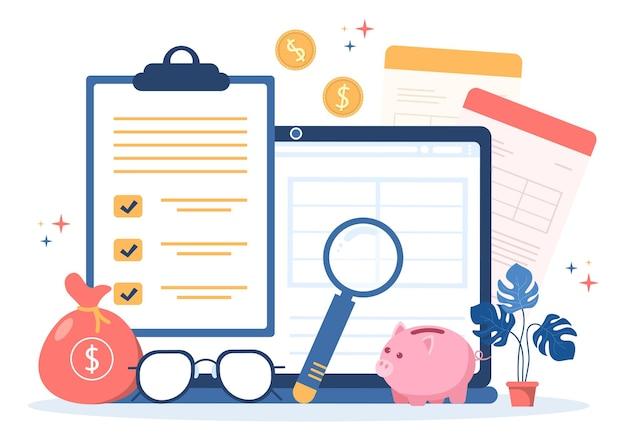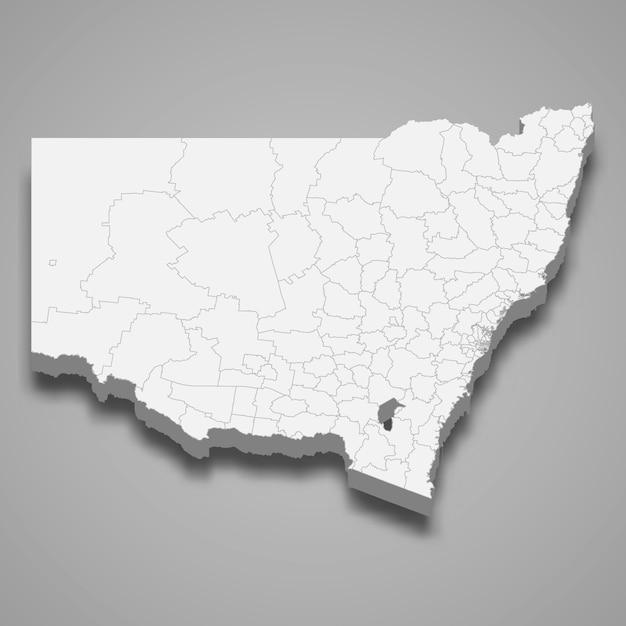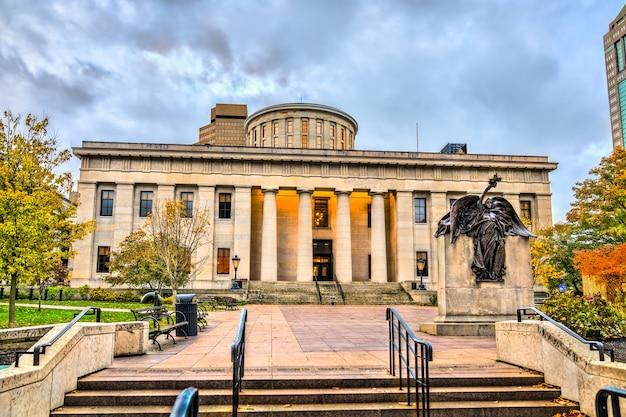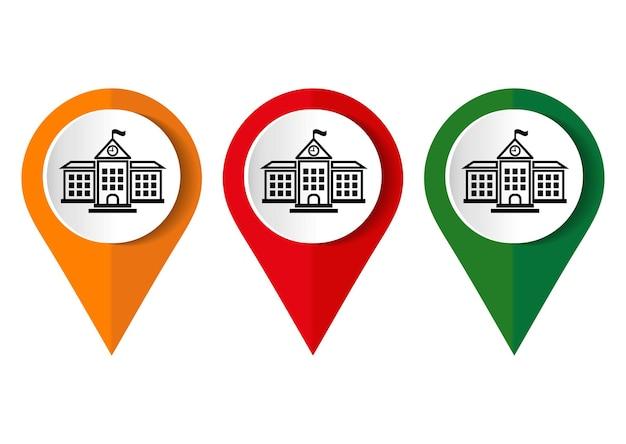Are you curious about the latest technology trends in state and local government? You’re not alone. With the ever-changing technological landscape, government entities must keep up with emerging trends to provide quality services to their constituents. From new government technology to local government trends 2023, there are numerous developments to look out for.
According to Deloitte’s 2021 Government Tech Trends report, emerging technologies such as Artificial Intelligence (AI), Robotic Process Automation (RPA), and Blockchain have become game-changers for governments. With AI’s ability to analyze data and RPA’s potential to automate manual processes, governments can streamline operations, reduce costs, and improve accuracy.
But what technologies does the government use? You may be surprised to learn that the government is adopting innovative tools such as Virtual Reality (VR) to simulate training and 3D printing to create essential parts and even the construction of buildings. Governments are also shifting to cloud-based solutions and chatbots for faster and better service delivery to citizens.
So, what are the trends in local government technology? The answer lies in focusing on data-driven decision-making. Local governments are creating dashboards and implementing analytics to assess community needs better. Smart technologies such as smart parking systems, Wi-Fi-enabled public transport, and environmental sensors are also part of the trend.
Stay tuned as we dive deeper into state and local government technology trends. Follow us for more informative articles and keep up with the latest developments.
State and Local Government Technology Trends
Technology is changing the way the government operates at all levels. State and local governments are no exception, and they are harnessing the power of technology to improve governance, efficiency, and citizen services.
The Rise of Digital Citizen Services
Gone are the days when people had to wait for hours to complete a simple government transaction. The rise of digital citizen services has simplified the process of accessing government services. Today, citizens can apply for permits, pay bills, renew licenses, or register to vote online from the comfort of their homes. The adoption of digital technologies has made governments more accessible, efficient, and responsive.
Cloud Computing
State and local governments are embracing cloud computing to streamline operations and reduce costs. Cloud computing offers governments the flexibility and scalability to store, manage, and analyze data. As a result, governments can deliver more efficient services, reduce data center costs, and enhance data security. Cloud computing also provides governments with the ability to store and share data across departments, enabling better collaboration and coordination.
Cybersecurity
State and local governments are increasingly being targeted by cybercriminals. The stakes are high when it comes to cybersecurity, as sensitive data such as citizen’s personal information and financial data is at risk. Governments are investing heavily in cybersecurity to prevent data breaches, protect critical infrastructure, and secure citizen’s data. With the rise of sophisticated cyber threats, governments are also focusing on training their employees to recognize and mitigate cyber threats.
Data Analytics
State and local governments generate vast amounts of data that can be used to make informed decisions, improve citizen services and shape public policy. Governments are using data analytics tools to make sense of the data and use it to inform decision-making. By harnessing data analytics, governments can anticipate trends and make data-driven decisions that improve governance, enhance service delivery, and drive economic growth.
In conclusion, technology is rapidly revolutionizing the way states and local governments operate. The adoption of digital citizen services, cloud computing, cybersecurity, and data analytics are just some of the trends that are transforming the government’s role in delivering public services. As governments continue to innovate and embrace new technologies, they are becoming more efficient, transparent, and responsive to citizens’ needs.
New Government Technology
In recent years, state and local governments have been implementing new technology to enhance their operations and better serve their constituents. Here are some of the latest trends in government technology:
Cloud Computing
One of the most significant developments in technology for state and local governments is the use of cloud computing. Cloud computing refers to the storage and management of data in a network of remote servers on the internet, rather than local servers. By using cloud-based services, state and local governments can reduce costs associated with managing their own servers and can access data from anywhere, making it easier to collaborate and share information securely.
Mobile Devices
State and local governments are beginning to embrace mobile devices, such as smartphones and tablets, to enable employees to work more efficiently and to better serve the public. Mobile devices can streamline processes, allowing government employees to access information and complete tasks while on-the-go. Additionally, mobile devices make it easier for governments to communicate with their communities, for example by using push notifications to alert residents of upcoming events or emergencies.
IoT Technologies
The Internet of Things (IoT) technologies are becoming increasingly popular in state and local government. IoT refers to devices that are connected to the internet and can communicate with other devices. By using IoT devices, governments can monitor facilities and equipment, track the location of vehicles, and gather data on various aspects of city life, such as traffic and air quality.
Cybersecurity
With the increasing use of technology in government, cybersecurity has become a top priority. State and local governments are investing in new technologies and processes to protect their networks, data, and devices from cyber threats. This includes using encryption, firewalls, and other tools to prevent unauthorized access.
In conclusion, the use of new technology in state and local government is rapidly evolving, and promises to create better experiences for both government employees and constituents. From cloud computing to IoT technologies, there are numerous ways that technology is being harnessed to make government more efficient, effective, and secure.
Local Government Trends for 2023
As technology continues to advance rapidly, local governments are always on the lookout for ways to improve the services they offer to their citizens. Here are a few local government trends to keep an eye on in 2023:
Smart Cities
As technology becomes more ubiquitous, cities are seeking to integrate their systems into a smart city infrastructure. This integration aims to make city services more efficient and enhance the quality of life for residents.
Citizen Engagement
Local governments are understanding the importance of engaging with their citizens. They are turning to digital platforms and mobile applications to communicate better with their residents and gather feedback on city services.
Predictive Analytics
Local governments are also turning to predictive analytics to anticipate and mitigate community concerns. By analyzing data such as citizen feedback, crime rates, weather patterns, and traffic patterns, local governments can predict and respond to issues proactively.
Cloud Migration
2023 may see a greater number of local governments migrating to cloud-based systems. This shift allows for greater accessibility for employees and stakeholders, improved service delivery, and reduced costs associated with hardware maintenance.
Online Learning
Online learning is not just for students. Local governments are turning to online training modules and resources to provide professional development opportunities for their teams. This shift allows local governments to develop talent in-house and stay up-to-date on best practices without incurring significant expenses.
In conclusion, local governments are always looking for ways to improve service delivery and connect with their communities. By embracing emerging technologies, they can create more livable, sustainable, and prosperous localities for their citizens.
Deloitte Government Tech Trends
Deloitte is a globally renowned consulting firm that has been around for over a century, providing advisory services to a wide range of industries, including government agencies. In recent years, Deloitte has become one of the leading players in the government technology space, offering a range of innovative solutions to help modernize and optimize public sector operations.
Cloud Computing
One of the key areas where Deloitte is helping governments worldwide is in the implementation of cloud computing solutions. The firm believes that cloud computing can help drive efficiency and cost savings in the public sector by enabling governments to better manage and share data, streamline workflows, and leverage advanced analytics to make data-driven decisions. With the rise of remote work due to the pandemic, governments are now looking to cloud computing solutions to help them adapt to these new ways of working.
Cybersecurity
Given the rise of cyber threats in recent years, cybersecurity has become a critical concern for governments. Deloitte recognizes this challenge and is helping governments to develop robust cybersecurity frameworks to protect against cyber-attacks. These frameworks include the use of advanced threat intelligence, strong encryption, and comprehensive data protection measures to ensure that government data remains safe and secure.
Digital Transformation
In today’s digital age, governments must transform their operations to meet the needs of citizens and stay competitive. Deloitte is helping governments worldwide to digitize their operations, processes and services, making them more user-friendly and efficient. By leveraging technologies such as artificial intelligence (AI), blockchain, and the Internet of Things (IoT), Deloitte is helping governments to drive innovation, improve citizen trust, and deliver better services to citizens.
In conclusion, Deloitte is playing a significant role in shaping the government technology landscape by providing innovative solutions to public sector agencies worldwide. Their solutions are helping governments to become more efficient, productive, and secure in today’s digital age.
What Technologies Does The Government Use
The state and local governments often use a variety of technologies to carry out their operations effectively. These technologies allow the government to provide better services to its constituents, enable efficient collaboration among government organizations, and enhance overall productivity.
Cloud Computing
Cloud computing is one of the most widely-used technologies in the government sector. It allows the government to store, manage, and process data on remote servers that can be accessed from anywhere, making it easier for government employees and agencies to collaborate and share information.
Artificial Intelligence (AI)
Artificial Intelligence has been gaining traction in the government sector over the past few years. Governments use machine learning applications to analyze data, provide insights, and automate processes, resulting in more efficient and cost-effective operations.
Cybersecurity Technologies
The government invests heavily in cybersecurity to protect its assets and information from cyber attacks and data breaches. This technology includes firewalls, anti-virus software, intrusion detection systems, and encryption tools, to name a few.
Blockchain
Blockchain technology is slowly finding its way into the government sector. It can be used to secure transactions, eliminate fraud and corruption, and enhance transparency in government operations.
Open Data
Governments are increasingly making their data openly available to the public to promote transparency and access to information. Open data encompasses various technologies, including APIs, data visualization tools, and geospatial mapping tools.
In conclusion, state and local governments leverage a wide range of technologies to enhance the delivery of services and overall productivity. As technology continues to advance, we can expect to see more innovative applications of technology in government operations.
What Are the Trends in Local Government Technology
Technology is rapidly advancing every day, and it’s transforming the way local governments operate. Here are some of the current trends in local government technology.
1. Cloud technology
Cloud-based technology is becoming more popular in local governments because it allows for easy data storage and sharing. With cloud technology, government officials can access important data from any location. This technology also allows for more efficient communication with citizens.
2. Mobile apps
More local government agencies are developing mobile apps to make it easier for citizens to access information and services. Citizens can use these apps to pay bills, report issues, and communicate with local officials.
3. Open data portals
An open data portal is a website where citizens can access public information about their city. Local governments are creating open data portals to promote transparency and allow citizens to access important data, such as crime statistics and budget information.
4. Cybersecurity
With the increased use of technology, there is a growing concern for cybersecurity. Local governments are now more focused on protecting their data from hackers and other threats. They are investing in cybersecurity training for employees and upgrading their security software.
5. Artificial intelligence
Some local governments are exploring the use of artificial intelligence (AI) to help solve problems. AI can help analyze data and make predictions, which can be useful in city planning and resource allocation.
In conclusion, these are just a few of the trends in local government technology. As technology continues to advance, we can expect more changes in how local governments operate. It’s important for local officials to stay up-to-date with the latest technology trends to provide better services to their citizens.



